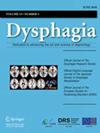老年人营养不良、吞咽困难、肌肉疏松症和虚弱:回顾过去,启迪未来卫生系统最佳实践的方向。
摘要
老年人口急剧增长,对医疗保健提出了更高的要求。营养不良、吞咽困难、肌肉疏松症和虚弱是老年人口中的高发疾病。以往的研究(Byun 等,发表于 BMC Geriatr 19(356):1-7, 2019;Fujishima 等,发表于 Geriatr Gerontol Int 19:91-97, 2019;Hernandez 等,发表于 Nutr Hosp 32(4):1830-1836, 2015;Nagano et al.in J Nutr Health Aging 23(3):256-265.5, 2019; Nishioka et al. in Clin Nutr 36(4):1089-1096, 2017; Robinson et al. in Clin Nutr 37(4):1121-1132, 2018, https://doi.org/10.1016/j.clnu.2017.08.016 )表明,这些疾病经常与筛查和干预有关,在许多情况下是可以预防的。本研究利用美国国家卫生统计中心 2008 年全国出院调查作为辅助数据,研究了这四个变量之间的关联,以及与年龄、在急症医院接受治疗的天数和这些患者接受康复和营养干预的频率之间可能存在的关联。在 165630 个病例中,研究人员根据所需的诊断和手术代码筛选出了 59029 个 65 岁及以上的病例样本。之后,研究人员筛选并排除了所有神经系统诊断,最终得出 2458 个病例。研究结果显示,营养不良与吞咽困难(χ2 (1) = 1882.618,p = 0.001)、吞咽困难与虚弱(χ2 (1) = 21.069,p = 0.001)和营养不良与虚弱(χ2 (1) = 88.434,p = 0.001)这三个变量之间存在显著关联。计算了点双项相关系数,以研究这四种情况与年龄和护理天数之间可能存在的关联。结果发现,营养不良与年龄之间存在明显的负相关(rpb (2456) = - 0.043,p = 0.05)。此外,护理天数与营养不良显著相关(r(2456) = 0.138,p = 0.001),与吞咽困难(r(2456) = - 110,p = 0.001)、乏力(r(2456) = - 0.060,p = 0.001)和肌肉疏松症(r(2456) = - 0.041,p = 0.05)显著成反比。最后,研究发现,接受康复和营养干预的病例与未接受康复和营养干预的病例之间存在巨大差异。The older population is growing exponentially causing greater demands on healthcare. Malnutrition, dysphagia, sarcopenia and weakness are highly prevalent diseases in the older population. Previous research (Byun et al. in BMC Geriatr 19(356):1-7, 2019; Fujishima et al. in Geriatr Gerontol Int 19:91-97, 2019; Hernandez et al. in Nutr Hosp 32(4):1830-1836, 2015; Nagano et al. in J Nutr Health Aging 23(3):256-265.5, 2019; Nishioka et al. in Clin Nutr 36(4):1089-1096, 2017; Robinson et al. in Clin Nutr 37(4):1121-1132, 2018, https://doi.org/10.1016/j.clnu.2017.08.016 ) has shown that these disorders are frequently associated, in many cases, preventable using screenings and intervention. This study utilized the National Hospital Discharge Survey of 2008 from the National Center of Health Statistics as secondary data to examine the associations amongst these four variables as well as possible correlations with age, days of care in the acute care hospital setting and frequency of rehabilitative and nutritional interventions received by these patients. Out of 165,630 cases, a sample size of 59,029 cases ages 65 and above were filtered by the researchers for desired diagnoses and procedure codes. After this, all neurological diagnoses were filtered and excluded by the researchers, resulting in 2458 cases. Using the Chi square test of independence, findings revealed significant associations between the variables of malnutrition and dysphagia (χ2 (1) = 1882.618, p = 0.001), dysphagia and weakness (χ2 (1) = 21.069, p = 0.001) and malnutrition weakness (χ2 (1) = 88.434, p = 0.001). The point biserial correlation coefficient was calculated to examine possible associations between these four conditions and age as well as days of care. A significant negative correlation was found between malnutrition and age (rpb (2456) = - 0.043, p = 0.05). In addition, days of care were significantly correlated with malnutrition (r(2456) = 0.138, p = 0.001) and inversely significantly correlated with dysphagia (r(2456) = - 110, p = 0.001), weakness (r(2456) = - 0.060, p = 0.001) and sarcopenia (r(2456) = - 0.041, p = 0.05). Lastly, the study found a large disparity between cases that received rehabilitative and nutritional intervention and those that didn't.

 求助内容:
求助内容: 应助结果提醒方式:
应助结果提醒方式:


